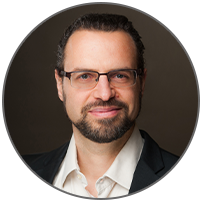Our relationship with the world around us, our Self, our bodies, our moods and emotions can often feel like a mystery. Fear is a prominent emotion for many people right now, due to the COVID-19 pandemic and, for those of us living in different parts of the US, the wildfires and hurricanes have created additional stress. We may even experience moments of panic — having thoughts driven by fear which are disproportionate with the immediate risk. Our body may respond to a “perceived” threat of COVID, natural disaster or other major stressors, when we think about what could happen. Our bodies and minds respond the same way to a perceived threat as they would to an actual immediate threat. A stress response is activated and our mind races, we feel like we can’t breath and we might experience other physical symptoms like insomnia, upset stomach, or restlessness. Research has shown that just watching traumatic or distressing news can even trigger symptoms similar to PTSD and right now many people are living in fairly stressful and traumatic realities.
I am a scientist dealing with data, but I want to share my personal experience. We have been living with COVID for an extended period of time now and there have been moments — after watching the news, hearing a personal story of someone I knew who contracted COVID, or some distressing statistics — that I would have a sore throat a few hours later. My thoughts would begin to race and blow that experience out of proportion, thinking it meant I had COVID. My guess is that many of you reading this can relate.
As a scientist, however, I also realize that watching distressing COVID-related information can activate a response in my body which up-regulates my immune response even when no actual, immediate threat is present. This can create a feedback loop – my mind tells my body there is a threat, my body responds, my mind interprets my bodily response as an increased threat, and so on. This is what Jon Kabat-Zinn, renowned mindfulness researcher and teacher, refers to as the “Second Arrow of Suffering.”1
According to Kabat-Zinn, and the ancestral spiritual tradition he was inspired by, humans (can) experience two arrows when something perceived as “bad” happens. The first arrow is the experience itself; the part we cannot necessarily change. The second arrow is our reaction to the experience — fear, guilt, shame, anxiety, etc. It can be easy to believe that suffering is inevitable, out of our hands. But, we can retrain ourselves to react differently and shift the dynamic of the Second Arrow of Suffering.
One powerful way to intervene with the second arrow of suffering is to be mindful when relating with the First Arrow — the initial experience. Jon Kabat-Zinn describes mindfulness as “paying attention, on purpose, in the present moment, non-judgmentally…” In my case, the first arrow would be my sore throat after hearing or seeing some challenging news about COVID. The second arrow is my belief that it meant I had contracted COVID and connecting that belief to all the frightening stories about the virus. Mindfulness can allow us to fully experience whatever is happening without attaching meaning or a story to it that might create additional stress or suffering. It is a powerful way to intervene in our experience and alleviate suffering.
We would love to hear from you about what practices and tools YOU are using to navigate the complexities of this new world we are living in. Click here to answer a few questions about what noetic practices and tools you are using during these times. It should only take approximately two minutes to complete.
About the Author
 Arnaud Delorme, PhD, is a CNRS principal investigator in Toulouse, France, a member faculty at the University of California, San Diego, and a research scientist at the Institute of Noetic Sciences. In 2000, Dr. Delorme completed his PhD thesis on visual categorization in humans, monkeys, and machines. Dr. Delorme then moved to the Salk Institute for a post-doc in Terry Sejnowski and Francis Crick’s laboratory where he focused on statistical analysis of electro-encephalographic (EEG) signal recorded during various cognitive tasks. He developed the free EEGLAB software for advanced analysis of EEG signals in collaboration with Scott Makeig, software which is now amongst the most used in EEG research worldwide. He was awarded a Brettencourt-Schueller young investigator award and a 10-year anniversary ANT young investigator award for his contributions to the field of EEG research.
Arnaud Delorme, PhD, is a CNRS principal investigator in Toulouse, France, a member faculty at the University of California, San Diego, and a research scientist at the Institute of Noetic Sciences. In 2000, Dr. Delorme completed his PhD thesis on visual categorization in humans, monkeys, and machines. Dr. Delorme then moved to the Salk Institute for a post-doc in Terry Sejnowski and Francis Crick’s laboratory where he focused on statistical analysis of electro-encephalographic (EEG) signal recorded during various cognitive tasks. He developed the free EEGLAB software for advanced analysis of EEG signals in collaboration with Scott Makeig, software which is now amongst the most used in EEG research worldwide. He was awarded a Brettencourt-Schueller young investigator award and a 10-year anniversary ANT young investigator award for his contributions to the field of EEG research.
1 Kabat-Zinn, J. (2013). Full Catastrophe Living; Using the Wisdom of Your Body and Mind to Face Stress, Pain, and Illness (Revised Edition) (Revised Edition ed.). New York, NY: Bantam.
